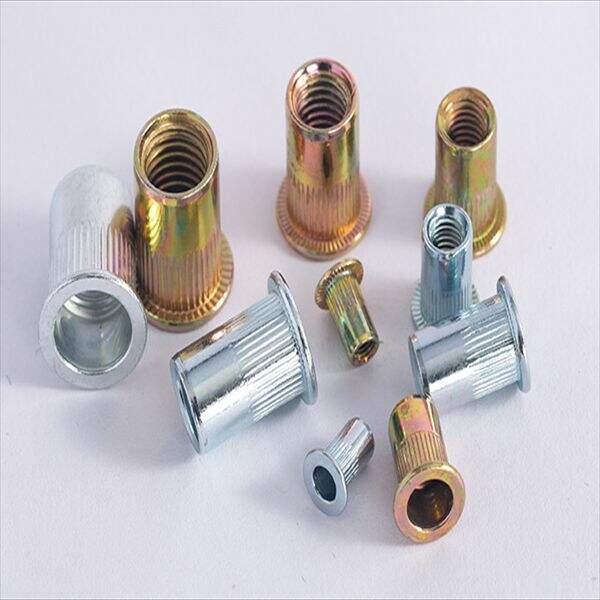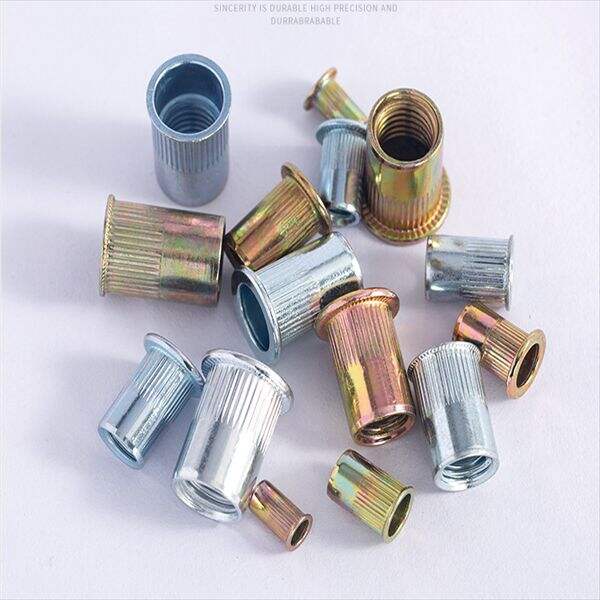One type of nut that some individuals prefer to use instead are regular nuts is rivet nuts, also the QD's product such as riveted nut. They are designed to penetrate through materials, such as thin sheet metal. Its nuts form a nice threaded hole, it is useful for order stuff. Check why they are the prime.
Standard nuts require a bolt to hold them in place, similar to the self cutting screws developed by QD. On thinner materials this can become a bit of an issue since the bolt tends to want to push too hard and bury itself on something as soft. Rivet Nuts come with a special tool utilized to place them, and once installed they rest flush on the surface of whatever material you are using. This makes them more secure as well less likely to unravel.
Rivet nuts are expand into the material with a special tool this stops them from coming loose(ish) as they cannot rotate.
How to Install Rivet Nuts Like a Champ
- Installing Rivet Nuts is Easier (with the right tools) Here are the steps to follow:
- Drill a hole through your material slightly larger then the rivet nut.
- Insert the rivet nut into the hole.
- Then, use a device to screw in part into rivet nut firmly.
- Utilize the device to enlarge rivet nut foundation for far better keep.

Open End and Closed-end Rivet Nuts, If no running/final exit pipe required then the open ended ones would be better as there is less chance of debris or water getting in them, same with QD's self tapping screws. Closed-end ones are ideal if you cannot conveniently get behind the material. Which of the two options to use will largely come down to what you are working on.

Tools used to place rivet nutsThe slugs can be set by hand pressure or tools such as a setting bolt in power tool. They are quicker and require physical exertion Use of a pneumatic tool is the best way to ensure a snug, tight fit. The included tool also comes with a variety of mandrels for use on different sizes of rivet nuts.
How to Select the Correct Rivet Nut for Your Job
What To Consider When Selecting A Rivet Nut Dust or water-resistant? Choose closed-end rivet nuts. Think about as well what it is you are working with. There are different rivet nuts for Securing Different Materials Lastly, consider how loose or tight the bond should be. They have the correct size and style of rivet nut for any application.
Therefore, if you are a professional in metalwork then rivet nuts instead of your normal nut will save both time and frustration. They create a tough tack that will not trip easily. With the proper tools and precautions, installing them is easy work; however consider this procedure when selecting rivet nut for your job based on what you are using it with or its strength.
In the word of fasteners, rivet nuts have become a preferred form, along with the self cutting screws manufactured by QD. These unique nuts, crafted to create a strong durable anchor in thin materials such as sheet metal provide users with an ideal solution for creating load-bearing threads. So what makes a rivet nut different than an ordinary standard 6 point type hex nut?
Benefits of Rivet Nuts Against Normal Screw
Due to the fact that they perform without exposing a bolt downwards, as regular nuts do, there is no threat of material deformation in case thin-walled materials are held; which can happen due to tension resulted by pressure from bolts. Again, a set of rivet nuts can be used for the secure fastening to play conservatively on something that seems like it is liable rattle free as usual so we do not take anything apart in 5 short steps.
Rivet nuts are also significantly resistant to vibration loosening. Where typical nuts can work themselves loose as vibrations loosen their grip, rivet-nuts physically alter the shape of a base nut into your material when installed for much greater security.
How to become a pro at Rivet Nuts Installation?
- Rivet nuts are quite easy to install when you have the right tools. Professional Installation Steps: Follow these steps.
- First, drill an ever-so-slightly larger hole in said material than the rivet nut being used.
- Place the rivet nut in the hole.
- Thread a mandrel into the rivet nut using a specialized tool until it sits flush with its top.
- Use the tool to flag out that flange of the rivet nut, this will secure it from not coming loose in your material.
Choosing the Right Rivet Nut for You
There are basically two main types of rivet nuts: Open ended and closed end. Used in applications where debris or moisture avoidance is critical, while closed end rivet nuts are recommended for instances when there is not access to the back of the material. It will depend on the specific needs of the application that we need to solve, if one is more convenient than other.

Rivet nuts can be installed using different tools, such as hand or power tools. Hand tools are cheaper, but power tools can speed up the installation. The use of a pneumatic tool is recommended for continuity and safe fitting. A few tools have mandrels in different sizes to fit any rivet nut size.
Choosing The Best Suited Rivet Nut For Your Task
Application, material type and required strength play key factor when choosing a rivet nut. If the course of clean or fluids exclusion is necessary, closed-end rivet nuts may be more preferable. Further, varying materials require certain rivet nut types as well - So make sure you choose one that will provide the strength in connection your project requires.
In Conclusion
The rivet nut is a proven way to replace traditional nuts, creating strong threads that are resistant to loosening and feed degradation, just like the QD's product called self tapping bolts. Rivet nuts have a straightforward installation, the only difficulty in installations can come on when capable of installing. When selecting the rivet nut best suited to your project, you should consider factors such as application, material compatibility and strength requirements.
QiDian has a diligent rigorous approach to work, a person-centered style of working and make great career objectives. We have a knowledgeable RD team. We invest Rivet nut of our profits annually as RD expenses to constantly innovate.
Plan the production schedule in a reasonable manner according to the time stated in the purchase order. Ensure punctual delivery date. Our Rivet nut equipment includes dozens machines being produced simultaneously, plenty of inventory and several production processes to speed up the process and reduce time to delivery.
Once the Rivet nut of our screws is complete After that, we have to conduct a complete optical screening. Choose a sample to be used to determine the weight, size, and salt spray tests. Ensure product quality.The Quality Assurance Department inspects materials and products and compiles reports for each process.
We can Rivet nut custom-designed drawings according to the customer's specifications, which include the survival conditions, humidity requirements as well as hardness and torque requirements, selecting appropriate sizes and materials. You are also able to communicate with our customer support and provide them with drawings.